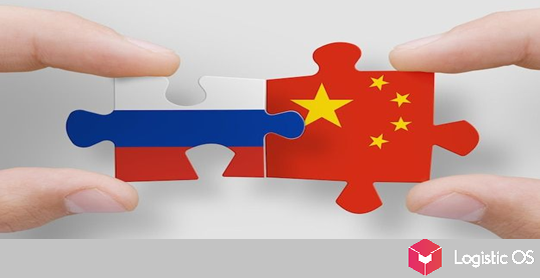Transport is a significant budget item in Kazakhstan, accounting for up to 8% of its GDP.
This area could be hit as a result of the New Year’s protests.
Kazakhstan is a state that is successfully located between Russia, China and the Asian region, as well as Western countries. In its policy, Kazakhstan behaves accordingly: it tries to keep a balance.
Its main partner with the maximum trade turnover (export + import) in 2020 was Russia: 21% of all Kazakhstani trade, $18.2 billion. In second place is China: $15.3 billion, 18%.
Due to its location, Kazakhstan has become a very important country for the transit of goods, including containers, along the China-Europe route and back.
Kazakhstan played a very important role in the fact that the volume of land transportation in this direction has grown significantly. In the total volume of transit of Kazakhstan, this direction occupies 88%.
Why is container transportation through Kazakhstan so popular?
They are really popular: their volume has doubled since 2019. In 2021, it amounted to 1 million TEU per year, and this is a value approximately equal to the volume of the entire container transit through the territory of Russia.
It is very important that transportation through Kazakhstan eliminates the risk of congestion at the eastern Russian Railways range, which greatly increases the speed and predictability of terms.
To date, the relevant infrastructure has significantly expanded: many warehouses and terminals have appeared in Kazakhstan, which allow transit to be carried out quickly and efficiently.
What is the danger of political instability in Kazakhstan?
Among other things, it may deprive him of leadership in the transit of containerized cargo from China to Europe.
The protests themselves and even the armed clashes that took place had little effect on the transit, especially since the most acute phase is most likely behind us.
Another thing is important: reducing the predictability of transit and the country’s reputation. This increases the risks, which manifests itself in a quite tangible way: for example, the rates on bank loans for logistics companies are growing.
All this means that transit volumes may also be reduced. And they give the country 13.6 billion dollars a year, and 1 billion dollars is just container transportation.
At the same time, it is important to understand that transit through Kazakhstan is still not the only opportunity to send goods from China to Europe.
This direction has become very popular, primarily due to the pandemic, when there were significant difficulties with shipping by sea due to a shortage of containers.
But if now transit through Kazakhstan has additional risks, then this may change the situation in a disadvantageous direction for it.

